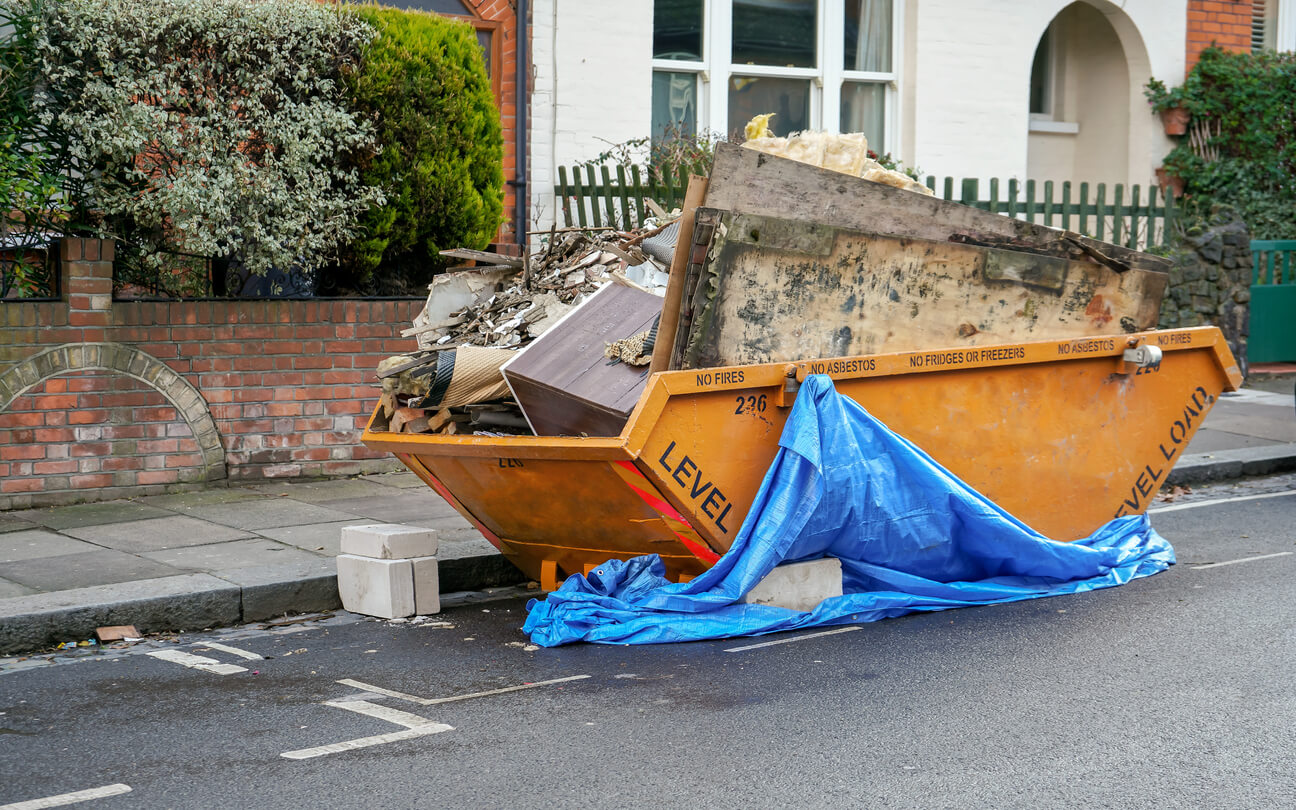How Full Can a Skip Be?
So you’ve ordered your skip and you’re ready to get started with whatever your project is, but now you’re curious about the amount of waste you have and you’re asking yourself “how full can a skip be?”. Well never fear, the team at Camiers are here to explain some key things to note about your skip hire arrangements as well as how to get the most out of it while still staying safe.

Choosing the right skip size
The first thing to say is that all our skips at Camiers come with a fill line. This is a marking on all skips which shows how full your skip can be. If your waste is piling over the top of the skip, it may not be collected as an overloaded skip cannot be moved. This is for the safety of everyone, ensuring waste is not spilt from the skip when it’s taken away.
An important factor in all this is the skip size you choose. It’s sometimes hard to predict how much waste you’ll produce, but the more accurately you can gauge this, the less you’ll have to worry about. That’s why it’s important to think about what you need first, to avoid paying for a second skip or facing issues when you overfill it.
We offer a variety of sizes to help you get rid of your waste responsibly, each with an approximate capacity for a full skip:
- 4-yard skip (3.00m³ or 40 bags)
- 6-yard skip (4.60m³ or 60 bags)
- 8-yard skip (6.00m³ or 80 bags)
- 12-yard skip (9.20m³ or 120 bags)
You might also want to consider the weight of a skip full of rubbish, as while it may not overflow the edges, a skip can still be considered to be overfilled if it’s too heavy. You should let your skip hire provider know what you intend to put in the skip if you’re worried about weight capacities.
Health and safety – considerations for filling a skip
The health and safety of our customers, drivers and the general public is of the utmost importance. That’s why we have a fill line for our skips. Exceeding the fill line can have an impact on safety as well as the environment in a number of ways:
- Items may fall out of your skip onto pedestrians or into the path of drivers
- Waste sticking out of your skip may be clipped by vehicles and could injure pedestrians
- Lighter items of waste might blow away and pose a danger to the surrounding environment
- Balancing items at a height could create a “landslide” of waste out of the skip
- An overfilled skip is more likely to spill or become unbalanced when being collected
How to maximise space in your skip
So, what’s the best way to fill up your skip? The idea is to maximise the space in your skip without going over the fill line or spilling out of the edges. Here are some steps you can take to ensure you get the most from your skip hire:
- Put light items at the bottom, this is so that the heavy items will compress the lower layers of waste
- Break up your bulky items, such as furniture and anything boxy, as this reduces the waste space internal to these items
- Place large, flat items such as doors either along the side of the skip (without rising over the walls of the skip) or as a flat layer over your light waste
- You can now load heavy waste on top of this to help crush the lighter waste and create more space
You can read more about how to load a skip effectively in our previous article which covers this in more detail.
Skip hire from Camiers
At Camiers, we work hard to provide affordable skip hire in Aylesbury and the surrounding areas. If you’re unsure what skip size you need, simply speak to our team and we’ll be happy to offer our professional guidance. No matter how much waste you need to dispose of, contact us today and book your skip.
